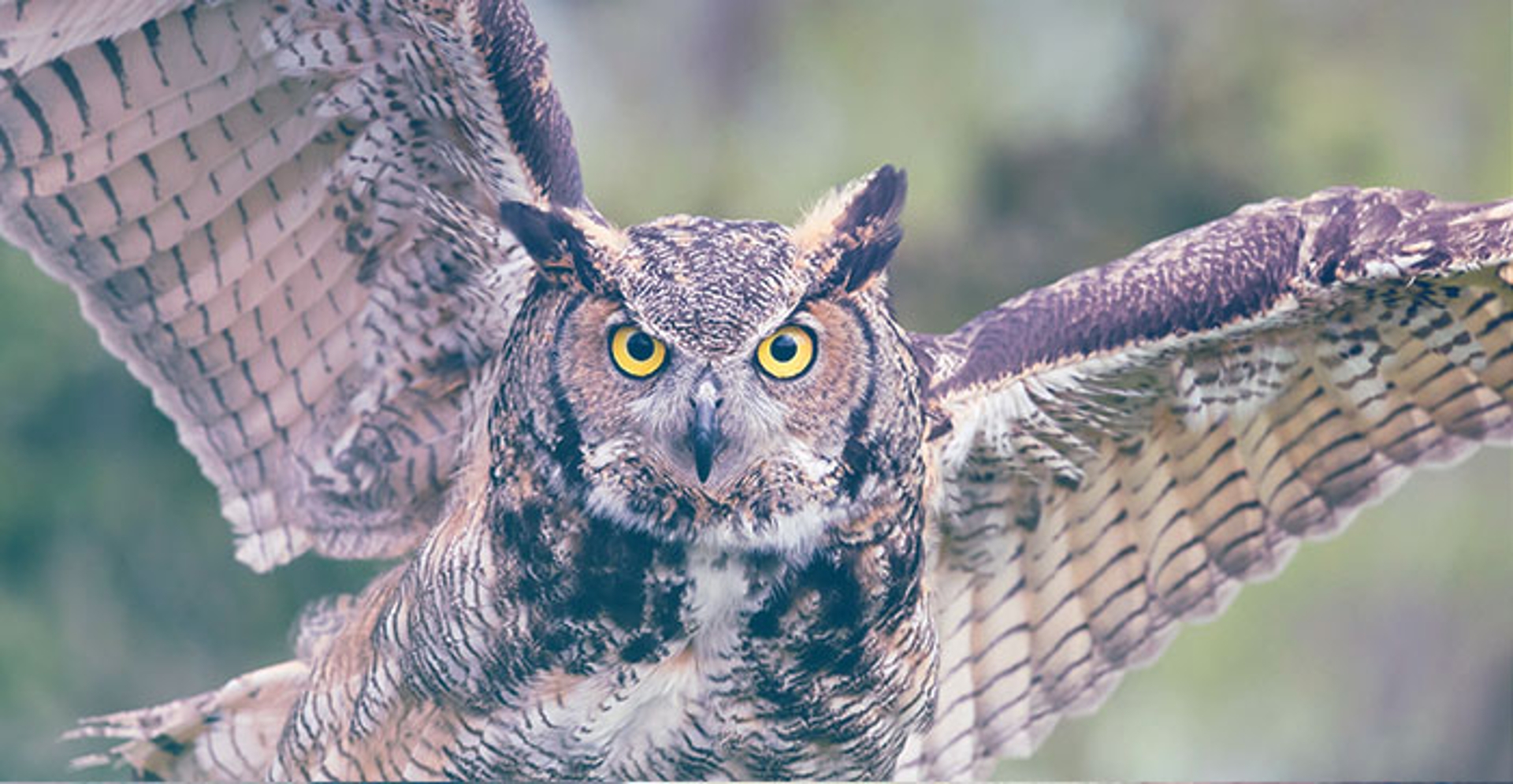24
Oct 2018
By Kathi Ferguson
Nocturnal animals have long been associated with Halloween, and there is surely no shortage of them living here on Delmarva. Three of the most common creatures that “go bump in the night” are the mysterious owl, the spooky bat, and the elusive bobcat-yes, the bobcat!
Dusk and dawn reveal the secretive owl, and eight of the 18 species typically found in North America reside on the Delmarva Peninsula.
Dusk and dawn reveal the secretive owl, and eight of the 18 species typically found in North America reside on the Delmarva Peninsula.
Many of you have likely awakened to the familiar “hoo hoo” call of the Great-Horned Owl, or heard the “whinny” of an ear-tufted Eastern Screech-Owl near an open field. The wet, swampy woods of Delmarva are the preferred home for the heart-shaped face Barn Owls, as well as the large Barred Owls. The tiny, Northern Saw-Whet Owl can be found hanging out in the maritime forests of Delmarva’s barrier islands. And if you are lucky, you can spot the Snowy Owl in the winter, as they migrate through the Peninsula, often landing along Assateague Island.
Greeks and Romans believed that witches could turn themselves into owls, or that owls hooted to warn of the approach of a witch. The amazing ability of an owl to rotate its neck 270 degrees was turned into a myth in England, where it was believed that if you walked around a tree that an owl was perched in, it would follow you with its eyes, around and around until it wrung its own neck. Ouch!
Delmarva’s bats hibernate in abandoned buildings and barns (“Cave bats”), or roost under pieces of bark or in clumps of leaves (Tree bats). Ranking up there with jack-o-lanterns, these flying mammals have been eternally linked to Halloween. Visions of the black, winged shapes darting through the night sky conjure up thoughts of vampire movies and Count Dracula. Tales and rumors of blooding-sucking bats spread throughout Europe for centuries, where images of a winged demon stalked the night to prey on the blood of unsuspecting victims while they slept. But these mysterious species are in fact harmless creatures, known to consume up to 1,000 mosquitoes per hour. And since they do not fly at people, they will not get tangled in your hair!
Historically, the Eastern Bobcat has roamed our Peninsula, but these creatures are very hard to find. Graceful and stealthy, Bobcats are known for their distinct bobbed tails and pointed ears. Their tawny coat has varying patterns of spots and stripes. In fact, a Bobcat’s coat is like a fingerprint, unique to the individual and can be used to identify them. They are rarely spotted by humans and adapt well to diverse habitats. Although seldom seen, they can surely by heard during mating season, when their vocalizations resemble that of a screaming domestic alley cat. Scary!






